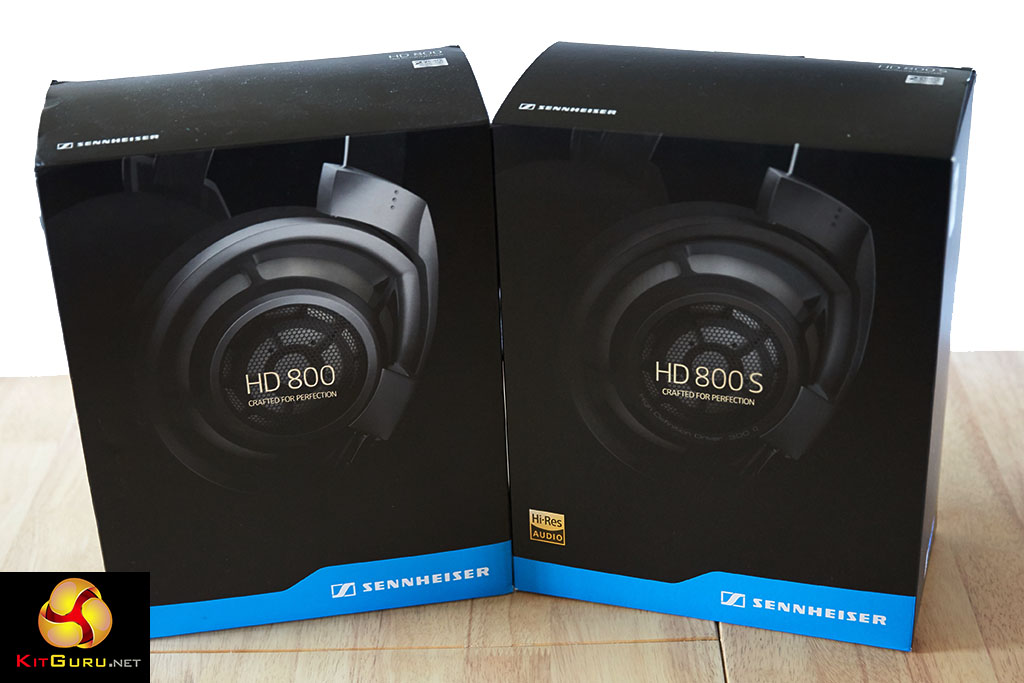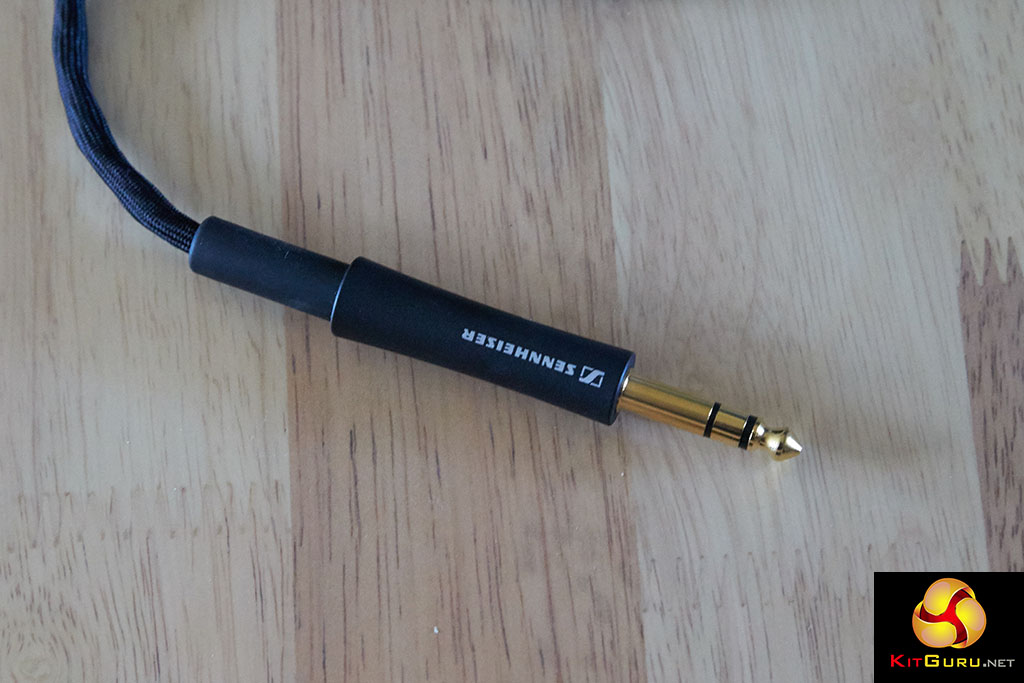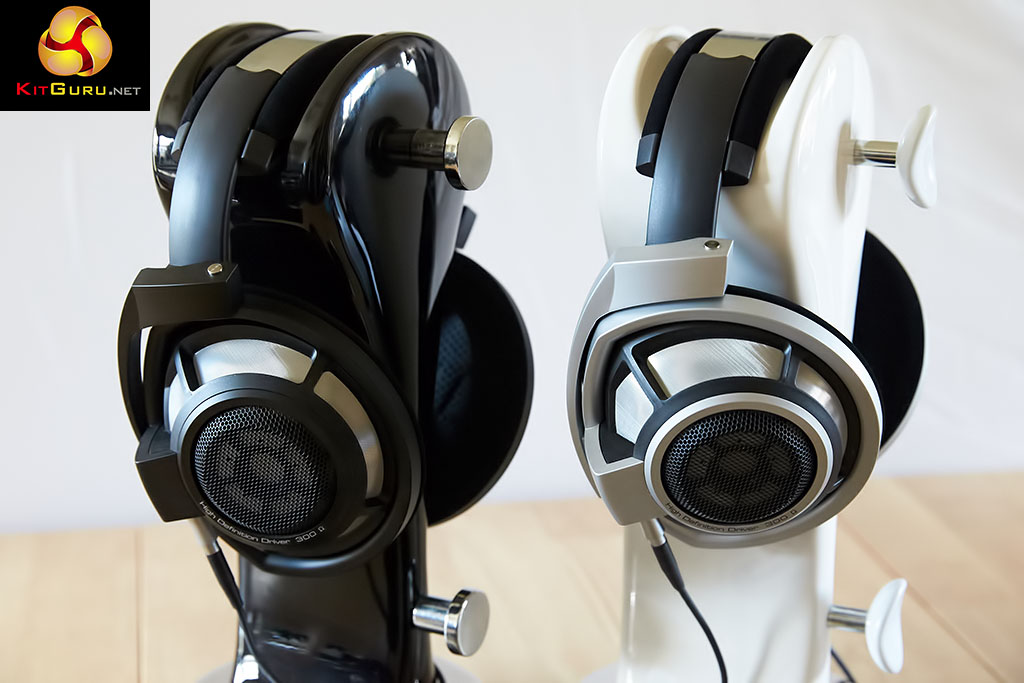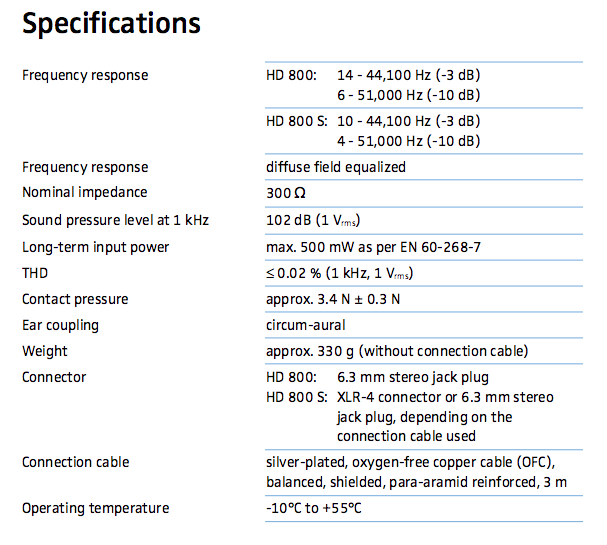I used the Sennheiser HD800 for many years and while I rate them highly as a studio headphone with the ability to extract insane levels of detail – they have never been one of my favourite headphones. I always found them a little too analytical for my tastes.
This was a shame considering their extreme levels of comfort, articulate phrasing, and glorious Sony R10-esque sound staging. My only real issue with the headphones was a slight treble accentuation which could make listening to music for many hours slightly fatiguing. I ended up giving them to my brother who has been using them heavily for 4 years. Credit to the Sennheiser team for the build quality, they still look brand new.
Sennheiser sent me a brand new HD800 and HD800 S along with their excellent HDVD800 amplifier. As the image above shows, the box artwork is almost identical.
The Sennheiser HD800 are securely boxed with a user manual. Inside are the headphones, as well as a USB drive (with technical test data from the headphones), a 1/4″ single ended cable, and a little felt pouch. They also include a little microfibre cleaning cloth.
The Sennheiser 1/4″ cable is soft and flexible, gold plated, with the brand name clearly printed on the adapter.
The XLR 4 pin balanced cable is supplied inside a luxurious soft felt bag, shown above.
The earlier version of this XLR cable (in silver to match the HD800) was only available as an optional £250 extra, so I was very surprised to see that Sennheiser are now bundling a black version with the HD 800 S.
The image above shows the Sennheiser HD 800 S (left) and the original Sennheiser HD 800 (right). The headphones are almost identically styled, although the new S revision is ‘black', rather than silver. It is worth pointing out that the HD800 is one of the most comfortable headphones you can buy, with a truly exceptional headband adjustment system.
Attention to detail throughout is stellar although the audience who prefer old fashioned radio operator style headphones (think Grado) may be alienated by the hi-tech robotic appearance. The HD800 has always looked futuristic and it makes sense that Sennheiser didn't radically change what was always a fantastic headphone design. The HD800 S weigh only 330grams meaning that they remain comfortable throughout longer listening sessions – something I can't say about the latest superweight Audeze LCD4 which place a lot of strain on the head and neck.
The HD800 S headphones are completely open, so you are able to hear anyone close by, and they will be able to ‘enjoy' the music you are listening to, without much effort. They are not ideal for an office environment or when using public transport unless you want to get under the skin of everyone you meet.
The HD800 S earcups are made from high attenuation plastic which is used in aviation engineering. They are designed to ensure that sound waves are directed to each ear at an angle to create an excellent soundstage.
The pads are removable so they can be cleaned or replaced easily enough. They are large enough to envelope the whole ear (even my big lobes are perfectly encased) and are topped with Alcantara, a lovely suede style fabric that is water resistant, long lasting and very comfortable against the skin.
The 56mm transducer and patented ring design diaphragm deliver a frequency response ranging from 6hz to 51kHz with a total harmonic distortion of 0.02 percent. They are rated at 300ohm.
When Sennheiser were designing the new HD800 S they aimed to address the major concern that I and other people had with the original HD 800. They wanted to tame the somewhat aggressively detailed sound characteristics.
Achieving this without ruining the overall sound signature of the flagship headphone was achieved by adopting absorber technology first seen in the Sennheiser IE 800 earphones. The incorporation of absorber technology helped to smooth out frequency peaks while maintaining the same levels of detail throughout the audio curve. Medium and low frequencies ranges have been optimised further over the original design.
In their own words ‘The enhanced sound reproduction of the HD 800 S is achieved through the addition of the innovative absorber technology that was pioneered in the Sennheiser IE 800 – a breakthrough that preserved the audibility of very high frequency sounds by eliminating a phenomenon known as the “masking effect”, where the human hear struggles to hear frequencies of sound when lower frequencies of a higher volume occur at the same time. By absorbing the energy of the resonance, Sennheiser’s patented absorber technology prevents any unwanted peaks and allows all frequency components – even the finest nuances – in the music material to become audible.'
If we look at the official specifications of the HD800 and HD800 S we can see that the changes in design have enhanced the frequency response in the lower frequencies.
The frequency response graph highlights HD800 S design changes, with the specific focus on enhancing lower frequencies between 100 and 200hz while smoothing out the peaks in the upper frequency range between 5k and 7k.
 KitGuru KitGuru.net – Tech News | Hardware News | Hardware Reviews | IOS | Mobile | Gaming | Graphics Cards
KitGuru KitGuru.net – Tech News | Hardware News | Hardware Reviews | IOS | Mobile | Gaming | Graphics Cards





















Thanks for the review. I would like to see more audiophile articles. Have you considered doing one on the upcoming MQA codec/ system? Computeraudiophile did a good write up of this. There is certainly a bit of controversy surrounding it. It would be nice to have an article that cuts through the pros and cons for consumers and how it could change music distribution.